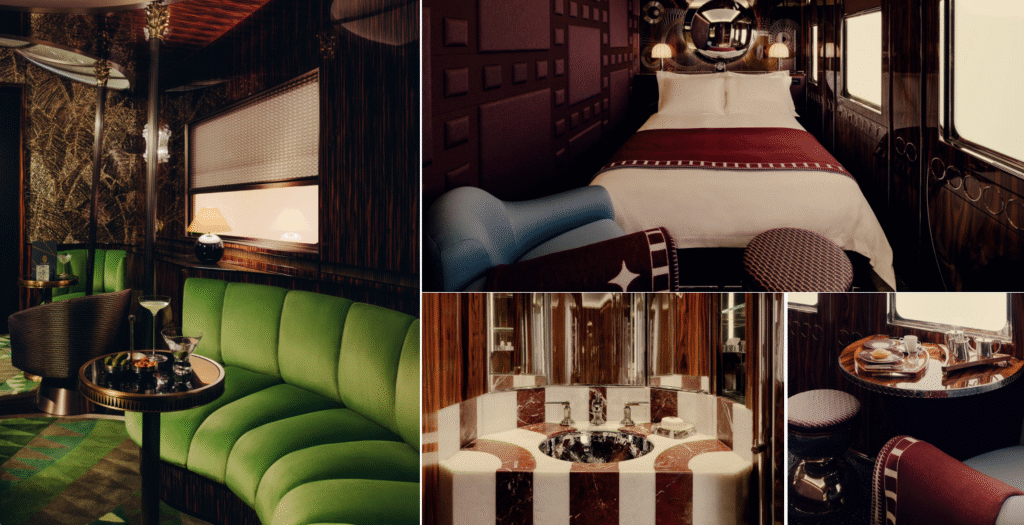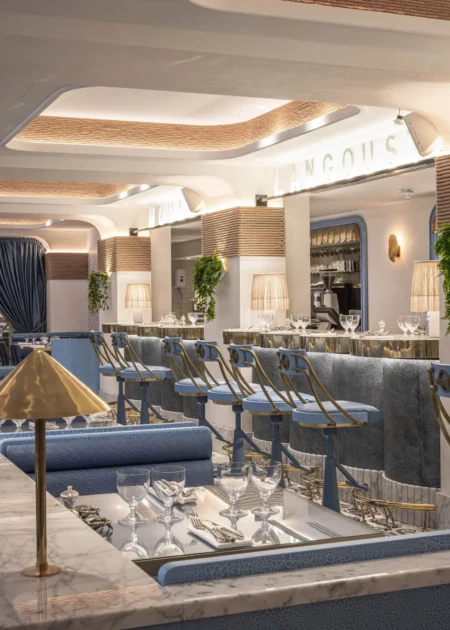An Orient Express train restored for the 21st century is the centrepiece of a major exhibition opening this week at the Musée des Arts Décoratifs in Paris, part of a centenary survey of Art Deco running from 1925 to 2025.
The exhibit, which appears in the museum’s galleries within the Louvre complex, presents the train as an intervention that bridges historical design with contemporary craftsmanship and technology. Curators have positioned the rail carriages as a dialogue with Art Deco masters such as Ruhlmann, Dunand and Lalique-Haviland, while highlighting new materials, digital tools and sustainability initiatives introduced during the restoration.
The project brought together thirty specialist artisans — including glassmakers, cabinetmakers, embroiderers and upholsterers — to work on the carriages. Several French ateliers credited with the restoration include Rinck, Ateliers Jouffre and the Tapestry Manufacture of Burgundy. The teams say they preserved original features such as Morrison & Nelson marquetry and Lalique glasswork where possible, while adapting interiors to contemporary expectations of luxury travel.
The revival of these carriages has a surprising back story. According to the Orient Express’s in-house historian, Arthur Mettetal, a search combining archival research with modern satellite imagery led to the identification of 17 carriages from the 1920s that had been abandoned on the Poland–Belarus border. Those carriages were subsequently transported to France and restored over several years.
The restored train’s appearance at the Musée des Arts Décoratifs coincides with a period of renewed activity for the Orient Express brand, which has been owned by hospitality group Accor since 2022. Earlier this year, the company launched new products under the Orient Express name, including a train called La Dolce Vita and a hotel in Rome, La Minerva. Accor has also announced further brand extensions: an Orient Express service in Venice scheduled for April 2026 and a Corinthian sailing yacht planned for June 2026.
The presence of a commercial hospitality brand as the principal exhibit in a major public exhibition is unusual and may signal a growing interest among museums in collaborations that blend heritage conservation with contemporary brand narratives. For the Orient Express, the museum showing reinforces the brand’s historical cachet — the original long-distance services established in the early 20th century are often held up as icons of design and luxury travel — while positioning its current owners’ attempts to expand the name across trains, hotels and yachts.
Observers will be watching to see how visitors and critics respond to the display: whether it is received primarily as a work of design and restoration or as an example of corporate heritage marketing staged within a national museum context. The exhibition lasts through the centennial season and will be accompanied by displays examining other aspects of Art Deco design over the last century.




















